Into the future

The geological record tells us about global temperatures over millions of years. The Earth has experienced phases of global warming and global cooling in the past, so to the geologist climate change is nothing new. However, what is unprecedented is the rate of warming of the planet, and the rapid rise in the atmosphere of the proportion of the greenhouse gas, carbon dioxide. Projections by the Intergovernmental Panel on Climate Change (2007), indicate global temperature rises in a hundred years to levels not seen for millions of years. In Antarctica, the Peninsula is almost the fastest warming place on Earth, and this has led to the collapse of several ice shelves. In contrast, some interior parts of the continent have not yet shown any significant temperature rise. |
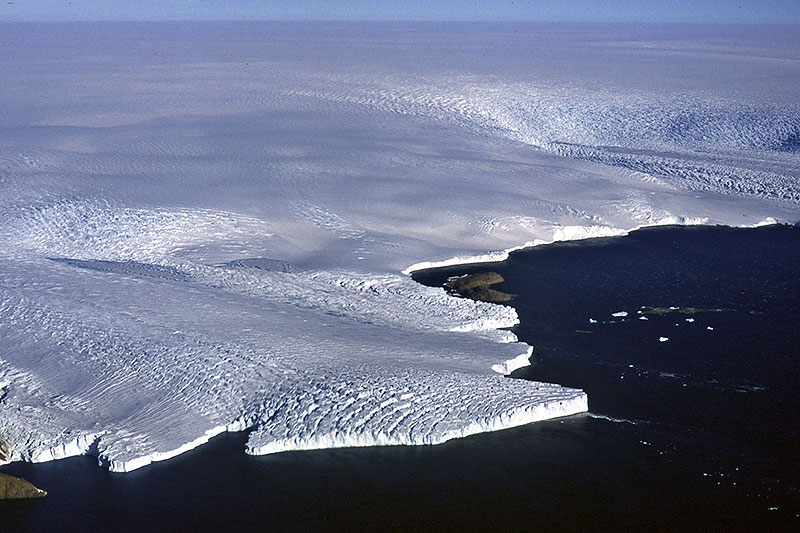 The modern glacial environment. The continent is dominated by the huge East Antarctic Ice Sheet that is up to 4.7 km thick. It reaches the coast around much of the continent, as here west of Australia’s Casey Station. Fast-flowing zones of ice called ice streams are heavily crevassed, as heer, and deliver most of the sediment to the coast. | 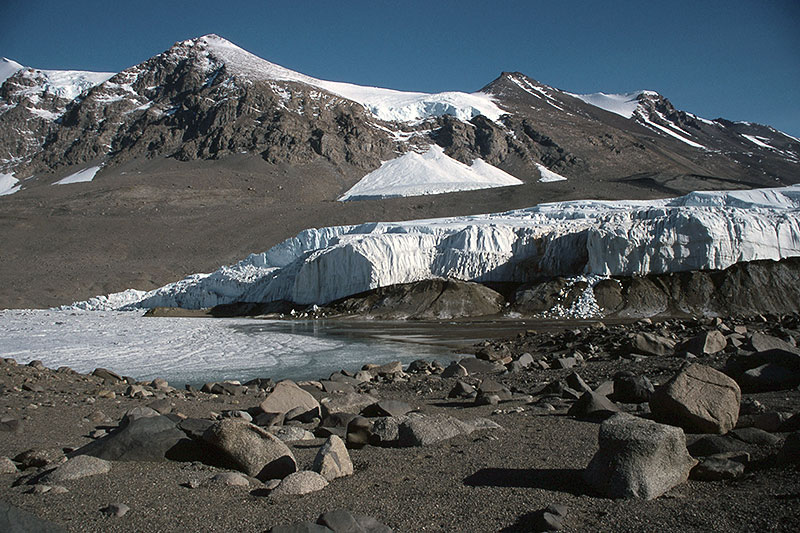 The snout of Taylor Glacier, which drains part of the Polar Plateau and terminates in the Victoria Land Dry Valleys. The cliff-like nature suggests a stable or advancing snout. The glacier terminates in the saline Lake Bonney. Note the small hanging glacier with rejuvenated glacier below in the background. | 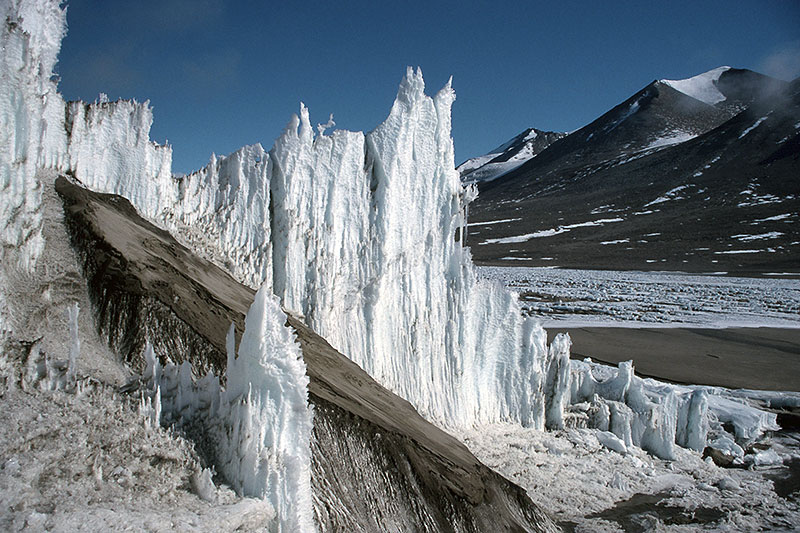 Ice pinnacles on the inland-flowing Wright Lower Glacier in the Victoria Land Dry Valleys, formed by differential ablation of ice between patches of wind-blown sand. Saline Lake Brownsworth is in the background. | 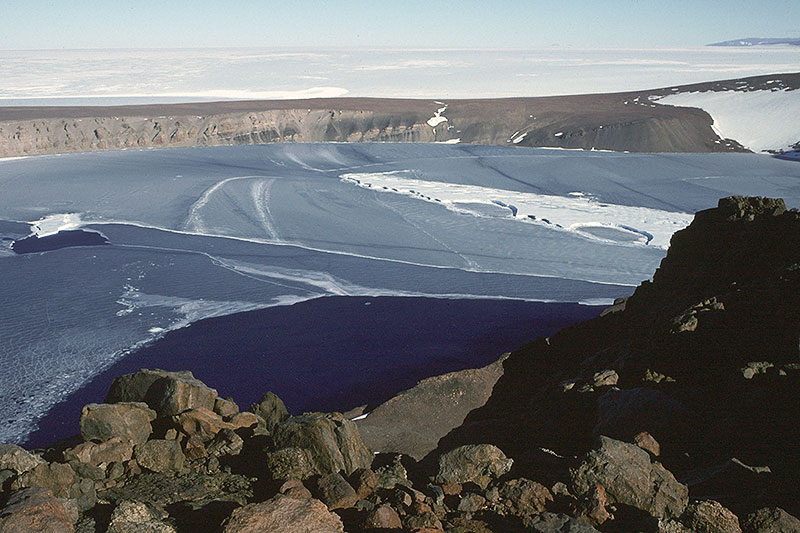 The modern glacial environment. A small valley glacier tongue extends across frozen Radok Lake from Battye Glacier in the Amery Oasis, northern Prince Charles Mountains. The Amery Ice Shelf is in the background. |
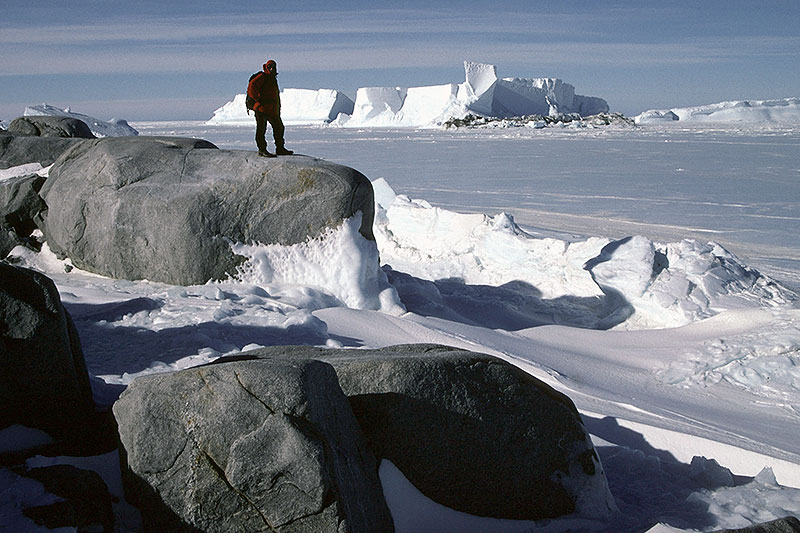 The coastal zone of McMurdo Sound near Cape Roberts shows sea ice adjacent to granite bedrock and a tabular iceberg that has grounded and pushed up a ridge of sediment. | 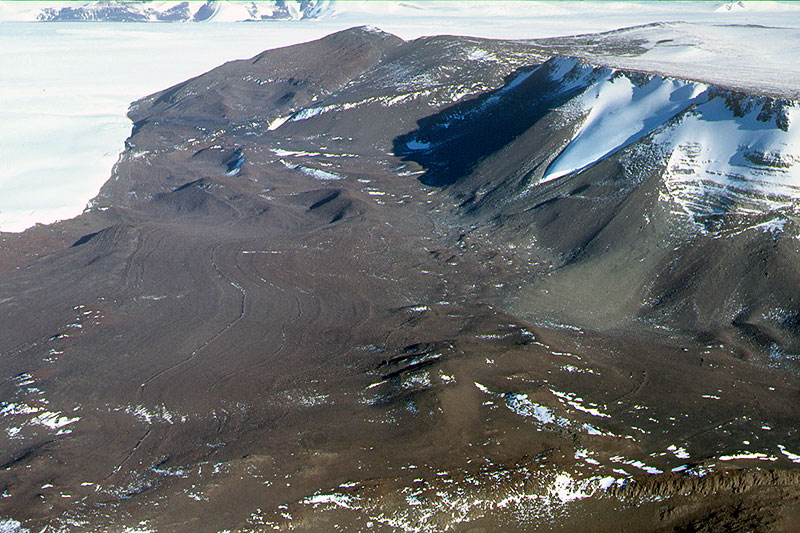 Roberts Massif, a nunatak at the edge of the Polar Plateau, shows a succession of closely spaced recessional moraines, probably spanning much of the Quaternary Period, but as yet undated. Despite the 85°S latitude, little snow accumulates and the areas is extremely arid. The ice sheet itself is sustained by only a few centimetres of snow a year. | 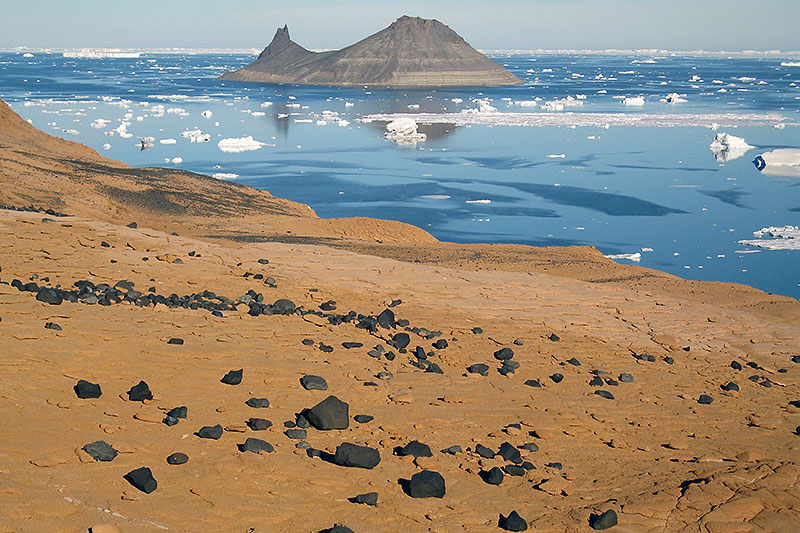 Small black basalt erratics contrast with the orange tuff of the underlying bedrock in this view overlooking Erebus and Terror Gulf and Humps Island, north-east James Ross Island. | 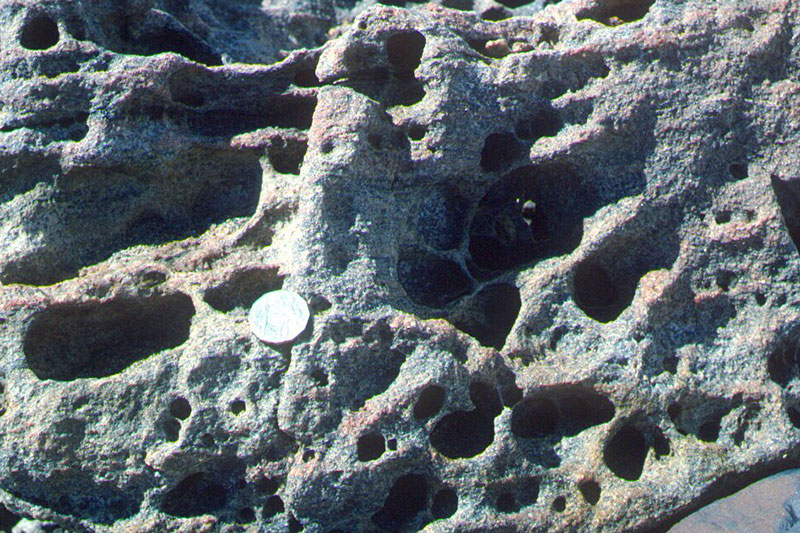 Wind-scouring is a powerful erosive agent in the arid parts of Antarctica. Here we see the results of this process, a honeycombed surface, on a sandstone boulder in the Amery Oasis, northern Prince Charles Mountains. |
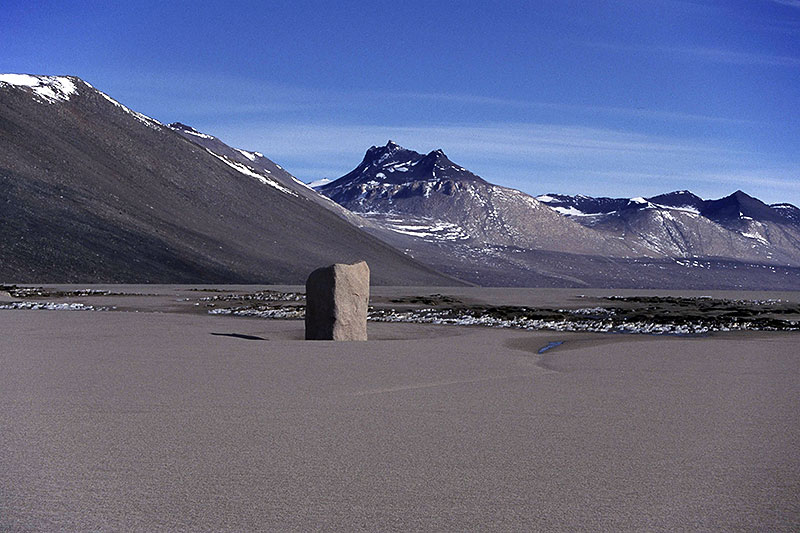 The Dry Valleys represent a desert environment in which very little precipitation falls, and aeolian sand recycling dominates modern sedimentary processes. This view of Victoria Valley also shows an unusual granite obelisk, near the glacier. |  Large-scale landslips occur where resistant Neogene volcanic rocks slide over soft Cretaceous sediments, as is evident from the uneven topography to the right of this photo of Rabot Point, James Ross Island. | | |